- Home
- The Element of Form in Art
The Element of Form in Art
So you’ve chosen the element of form in art to work on today? Great – that's the all important first step in your next project!
Not sure how to start? Well, let’s play with a few ideas to help get those creative juices flowing again...
Imagine it's a fine, fresh day and you’re taking yourself on an artist’s walk along the beach, looking for objects that speak to your artist’s soul...
Gulls are crying on the wind, you breathe in the smell of the salt spray and feel the cool, wet sand under your feet.
 A great day for beach-combing!
A great day for beach-combing!Picking up some sea-smoothed driftwood, you enjoy feeling its form as you turn it round in your hands.
Shells washed up by the tide catch your eye...
Some interesting shaped pebbles...
A glass bottle ...
After more beach-combing you notice the tide is on the turn, so it's time to re-trace your steps and head for home.
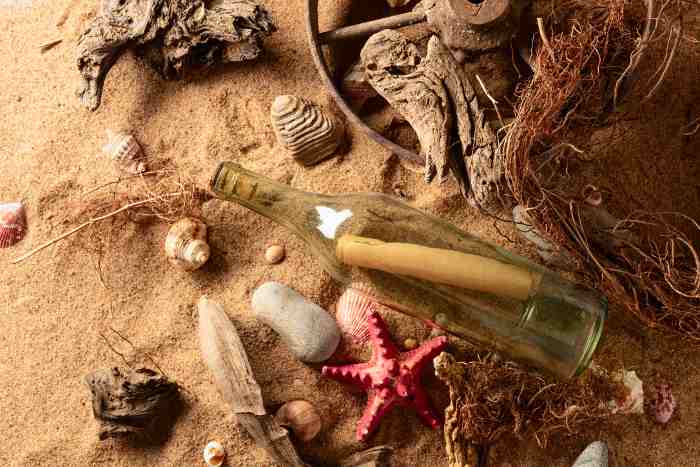 Possible beach-combing finds!
Possible beach-combing finds!
Back home again, you empty your bag of finds out onto your art table - and gaze blankly at them...
Yes, all very pretty, but what the heck are you going to do with
them?!
Still life? Abstract? Imaginative?
Good question! This is where you find out what lights the fireworks for you as an artist and really start getting into the possibilities of the form element.
So let's start with still-life...
Group your beach-combing finds together in an interesting way or just pick one object that
grabs you the most.
Okay, say you picked the shell; you're now going to use your artist’s eyes to really start seeing it. Not just looking at it, but seeing it!
So before you even think about reaching for a pencil or brush spend at least 5 minutes 'seeing like an artist'.
But what does that mean? Well, firstly, you notice every tiny thing about it!
 Sea shell back-lit by the rising sun.
Sea shell back-lit by the rising sun.You may notice the way light shines through part of it, showing up a thinner part of the form.
Are there ridges or a spiral effect on your shell anywhere?
What about the silky smooth entrance to where the little sea creature lived before it moved on to bigger and better real estate!
Shut your eyes for a moment. Hold it in your hands. How does it feel? Light or heavy? Delicate? Chunky? Rough or smooth?
Anything else...?
Good! By now you should know your shell pretty well!
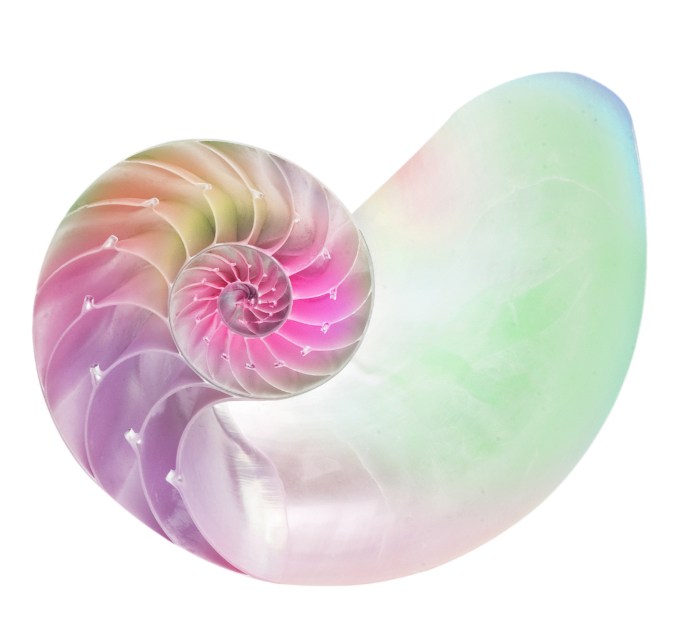 Nautilus shell
Nautilus shellThe vital next step..
Decide now what it is you love most about your shell! When you've done that you'll know which aspect will take centre stage in your finished work.
Remember, you have your own unique vision. We're dying to see what you loved about that shell and we're excited to see how you express it! Otherwise why are you bothering with it?
Have you decided? Great! Now is the time to reach for those paints or pencils and start discovering how the element of form in art can really come alive!
Go for it!
 "Still-life with Shells and Flowers" Balthasar van der Ast circa 1638
"Still-life with Shells and Flowers" Balthasar van der Ast circa 1638You may not want to tackle anything quite so ambitious as the painting above! (But don't let me stop you!)
One shell, framed, or even a series of small paintings presented as a group, would look great on your wall. How about the bathroom?
Hmm...I think I might try that!

Quick Tip: Use contrasts : is it the pale,shining beauty of the shell you like? Put it against something dark and matt. If you love it's chunky, ridged, sculptural form, contrast it with something smooth and silky like fabric or water.
Going Abstract?
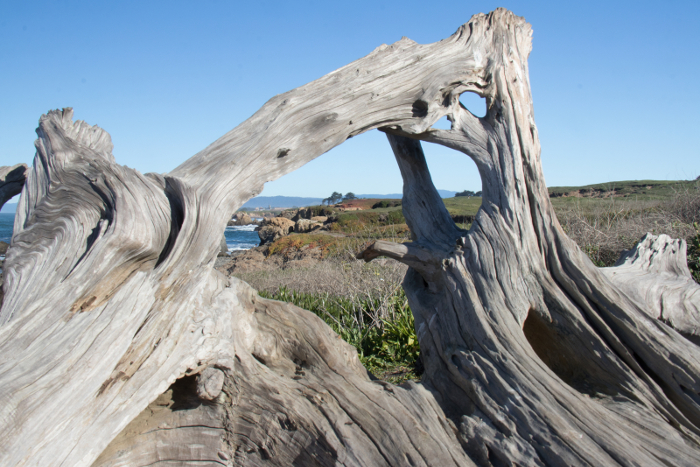
Now, on to abstraction:
Let's look at some driftwood - either the one you've picked up, or use the image above as a jumping off point.
How do we turn a three-dimensional form into two dimensions and have it end up as an abstract drawing or painting?
As always, start by looking for the thing you like most about it.
For me, I want to zoom in to a smaller part of that driftwood
- I love the holes which take your eye right through the form. What could you see through there?
I also like the swooping lines made by the way the tree grew. I might use them too.
(See more hints for magically changing three dimensions into two in shape vs form )
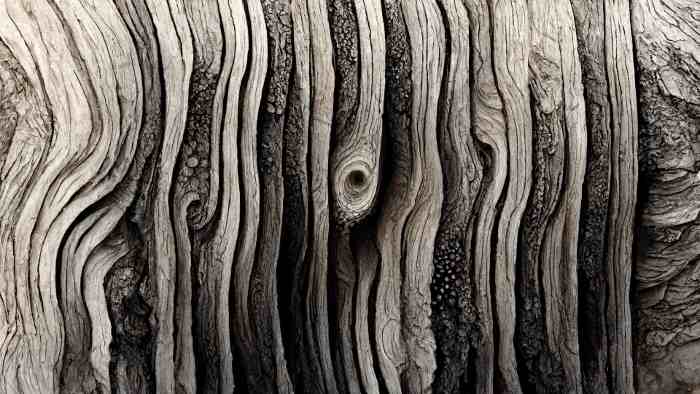 Interesting abstract possibilities can come from zooming in to your driftwood.
Interesting abstract possibilities can come from zooming in to your driftwood.Looking at your driftwood close-up can give you a totally different way of seeing it with abstract possibilities opening up for you.
As it's an abstract it doesn't need to look exactly like
driftwood any more, but it could still have a 'driftwoody' feel about
it if you want.
Do
you like the soft silvery greys of some weathered wood? You could add touches of metallic silver paint. Or even silver leaf? Nice!
Or go wild - use bright oranges and pinks with purples in the shadows!
How about painting a big horizontal abstract to display above your sofa in all your favourite colours. Wow!
Well, the color element seems to be muscling in on the act now - but if it wants to, let it - do what makes your heart sing!
Just take what you want from the original and let your imagination run free!
A Walk in the Woods
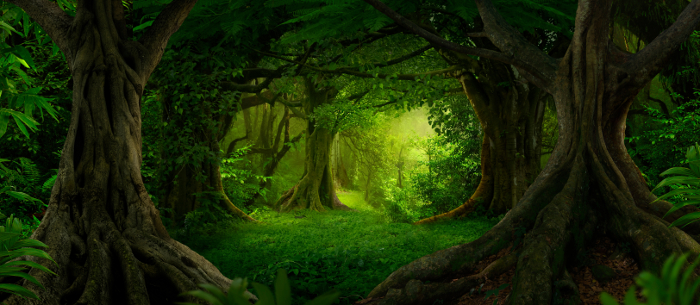
Of course, your artist's walk doesn't have to be at the beach. A walk in the woods or local park could be good places to spark off your imagination.
I wonder if the artist, Franz Marc, walked in a forest like the one above and found inspiration there for his abstract painting "Forms at Play"?
Tree forms are certainly in evidence in his work below, and also architectural forms which perhaps are in the process of being taken over by plants.
 "Forms at Play" Franz Marc 1914
"Forms at Play" Franz Marc 1914Abstract painting is just one of the ways our imagination has free rein to express our thoughts and ideas.
So, whether you decide to go abstract or realistic, the element of form in art is a fantastic tool to convey ideas - or to capture and express the beauty of the world.
Your easel awaits!
Interested in geometric form in art?
Like this page? Click the icons to share it.